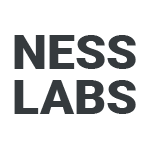Free your thoughts with the founders of Supernotes
In this interview, Connor Neblett and Tobias Whetton, founders of Supernotes, discusses about their innovative take on note-taking apps. They share their vision for creating granular pieces of knowledge that can be easily linked and collaborated on, and their strategies for integrating different tools for thought. Discover how they bring the benefits of pen and paper to the digital world and revolutionize the way we think and learn.
